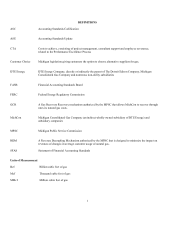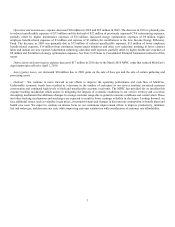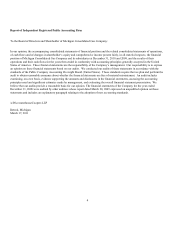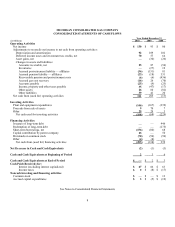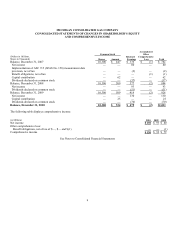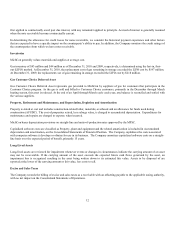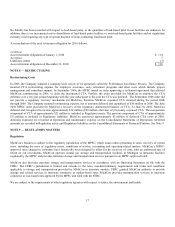DTE Energy 2010 Annual Report Download - page 13
Download and view the complete annual report
Please find page 13 of the 2010 DTE Energy annual report below. You can navigate through the pages in the report by either clicking on the pages listed below, or by using the keyword search tool below to find specific information within the annual report.
11
Under or over recovered revenues related to these cost tracking mechanisms are recorded on the Consolidated Statement of Financial
Position and are recovered or returned to customers through adjustments to the billing factors. See Note 9 for further discussion of cost
recovery mechanisms.
MichCon has an RDM that is designed to minimize the impact on revenues of changes in average customer usage of natural gas. The
June 2010 MPSC order in MichCon’ s 2009 rate case provided for, among other items, the implementation of a pilot gas RDM
effective July 1, 2010. The gas RDM enables MichCon to recover or refund the change in revenue resulting from the difference in
weather-adjusted average sales per customer compared to the base average sales per customer established in the MPSC order. The
RDM addresses changes in customer usage due to general economic conditions and conservation, but does not shield MichCon from
the impacts of lost customers or the impact of weather on customer usage. The RDM is subject to review by the MPSC after the initial
one-year pilot program.
Comprehensive Income (Loss)
Comprehensive income (loss) is the change in Common shareholder’s equity during a period from transactions and events from non-
owner sources, including net income.
(in Millions)
Net
Unrealized
Gains on
Derivatives
Benefit
Obligations
Accumulated
Other
Comprehensive
Loss
December 31, 2009
$ (1)
$ (1)
$ (2)
Current period change
—
—
—
December 31, 2010
$ (1)
$ (1)
$ (2)
Cash Equivalents
Cash and cash equivalents include cash on hand, cash in banks and temporary investments purchased with remaining maturities of
three months or less.
Receivables
Accounts receivable are primarily composed of trade receivables and unbilled revenue. Our accounts receivable are stated at net
realizable value.
The allowance for doubtful accounts is generally calculated using the aging approach that utilizes rates developed in reserve studies.
The Company establishes an allowance for uncollectible accounts based on historical losses and management’s assessment of existing
economic conditions, customer trends, and other factors. Customer accounts are generally considered delinquent if the amount billed
is not received by the due date, typically 21 days, however, factors such as assistance programs may delay aggressive action. MichCon
assesses late payment fees on trade receivables based on contractual past-due terms established with customers. Customer accounts
are written off when collection efforts have been exhausted, generally one year after service has been terminated.
Unbilled revenues of $157 million and $171 million are included in customer accounts receivable at December 31, 2010 and 2009,
respectively.
Notes Receivable
Notes receivable, or financing receivables, are primarily comprised of capital lease receivables and loans.
Notes receivable are typically considered delinquent when payment is not received for periods ranging from 60 to 120 days. The
Company ceases accruing interest (nonaccrual status), considers a note receivable impaired, and establishes an allowance for credit
loss when it is probable that all principal and interest amounts due will not be collected in accordance with the contractual terms of the
note receivable. Cash payments received on nonaccrual status notes receivable, that do not bring the account contractually current, are


